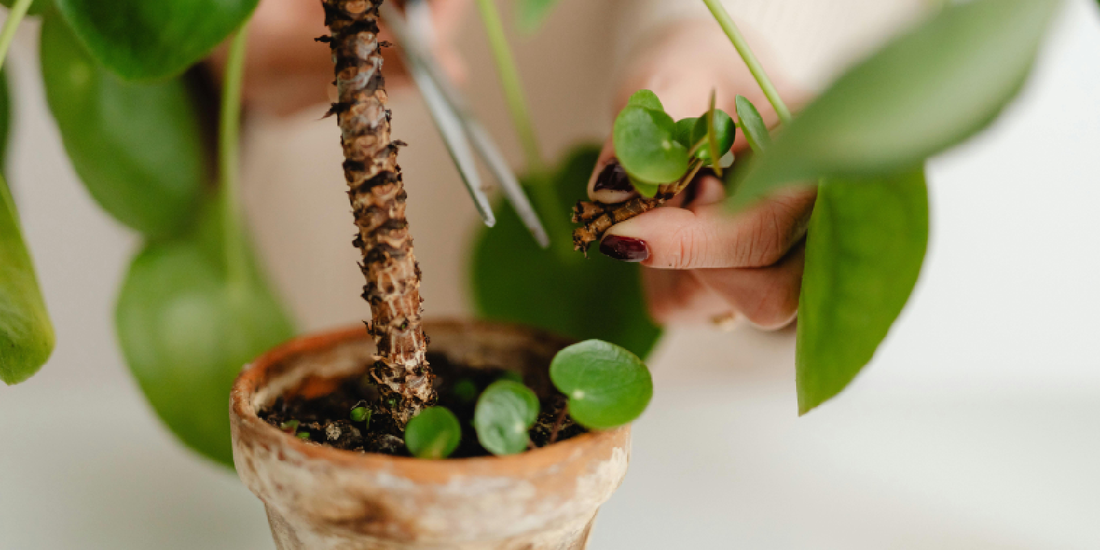
Why LED Grow Lights Are Best for Indoor Use?
Share
Indoor gardening has transformed from a niche hobby into a thriving trend embraced by urban dwellers, plant enthusiasts, and professional growers alike. Whether you’re cultivating herbs in a small apartment or nurturing a lush indoor jungle, light is the most critical factor in your plant’s health. Without sufficient natural sunlight, even the most attentive watering and fertilizing can fall short. This is where LED grow lights take center stage—offering a reliable, energy-efficient, and plant-friendly solution for indoor growing.
In this in-depth guide, we’ll explore why LED grow lights are the best choice for indoor use, how they compare to other light sources, and how pairing them with the amoyls VerdantGlow S-Shaped 8-Tier Plant Shelf with Grow Lights can create the perfect environment for your plants to thrive.
1. Understanding the Needs of Indoor Plants
Plants rely on photosynthesis, a process that converts light energy into the food they need to grow. Outdoors, the sun provides a full spectrum of light—ranging from blue wavelengths that encourage leafy growth to red wavelengths that stimulate flowering and fruiting.
When plants are brought indoors, access to direct sunlight is often limited by:
- Window placement (north-facing windows may not get enough light)
- Seasonal changes (shorter daylight hours in winter)
- Urban environments (tall buildings blocking sunlight)
- Room design (deep interiors with minimal natural light penetration)
Without sufficient light, plants become leggy, pale, and weak. This is why artificial lighting is essential for serious indoor gardening.
2. What Are LED Grow Lights?
LED grow lights are light-emitting diode fixtures specifically engineered to emit the wavelengths of light plants need most for photosynthesis. Unlike traditional incandescent or fluorescent bulbs, LEDs can be fine-tuned to provide the optimal light spectrum, maximizing plant health and growth while minimizing wasted energy.
Key characteristics of LED grow lights include:
- Full-spectrum output (mimics natural sunlight)
- Energy efficiency (uses less power than other lighting options)
- Cool operation (low heat output prevents leaf burn)
- Long lifespan (often 50,000+ hours)
3. Why LED Grow Lights Are the Best Choice for Indoor Use
3.1 Energy Efficiency Saves Money
LED grow lights consume significantly less electricity compared to high-pressure sodium (HPS) or metal halide lamps. Over months or years of indoor growing, this difference translates into substantial cost savings on your energy bill.
For example, a 100W LED grow light can often produce the same level of plant-usable light as a 250W HPS lamp—while using less than half the electricity.
3.2 Ideal Light Spectrum for Plant Growth
Unlike other light sources that emit a broad but inefficient range of wavelengths, LEDs can be designed to target the PAR spectrum (Photosynthetically Active Radiation)—the specific wavelengths plants use for photosynthesis. This ensures maximum growth with minimal energy waste.
Full-spectrum LEDs often include:
- Blue light (400–500 nm) → Encourages strong vegetative growth and leaf development.
- Red light (600–700 nm) → Stimulates flowering and fruit production.
- Supplemental white light → Provides a balanced, natural look for both plants and human eyes.
3.3 Low Heat Output Protects Plants
Heat management is one of the biggest challenges in indoor growing. High-intensity discharge (HID) lamps can raise room temperatures to plant-damaging levels, forcing you to invest in ventilation or cooling systems.
LEDs run cooler, reducing the risk of:
- Leaf scorch
- Drying out soil too quickly
- Burning delicate seedlings
This cooler operation also means you can place LED grow lights closer to your plants, delivering more usable light without causing harm.
3.4 Long Lifespan Reduces Replacement Costs
The average LED grow light lasts 50,000 to 100,000 hours—many times longer than fluorescent or HID bulbs. This not only saves you money on replacements but also minimizes waste, making LEDs the eco-friendlier choice.
3.5 Space-Saving and Flexible
Indoor gardeners often work within tight spaces. LED grow lights come in compact, slim designs and can be integrated into multi-tier plant shelves like the amoyls VerdantGlow S-Shaped 8-Tier Plant Shelf with Grow Lights—allowing you to grow a large number of plants without taking up excessive floor space.
4. How LED Grow Lights Compare to Other Options
|
Feature |
LED Grow Lights |
Fluorescent Lights |
HPS / HID Lights |
|
Energy Efficiency |
★★★★★ |
★★★★☆ |
★★☆☆☆ |
|
Heat Output |
Low |
Low-Moderate |
High |
|
Spectrum Control |
High |
Moderate |
Low |
|
Lifespan |
50,000+ hours |
10,000–20,000 hrs |
10,000–15,000 hrs |
|
Maintenance |
Low |
Moderate |
High |
5. The Role of Design in Indoor Growing Success
Light quality is only part of the equation—how you arrange your plants and lights can make or break your indoor garden. Multi-tier shelving allows you to maximize vertical space, create microclimates, and keep your plants organized.
The amoyls VerdantGlow S-Shaped 8-Tier Plant Shelf with Grow Lights is a perfect example. It combines:
- Built-in full-spectrum LED grow lights for consistent illumination on every tier
- A unique S-shaped frame for visual appeal and structural stability
- Eight spacious tiers for growing herbs, flowers, and foliage plants in one compact footprint
- Modern, space-saving design that fits seamlessly into living rooms, kitchens, or offices
This integration means you don’t have to worry about buying separate lighting fixtures and figuring out how to mount them—the shelf comes ready to support your plants’ growth from day one.
6. Tips for Using LED Grow Lights Effectively
To get the best results from your LED grow lights:
-
Position lights at the right height
Keep LEDs 6–12 inches above seedlings and 12–24 inches above mature plants (depending on light intensity). - Match the light cycle to plant type
- Leafy greens and herbs: 14–18 hours of light per day
- Flowering and fruiting plants: 12–14 hours per day
-
Watch for signs of light stress
If leaves start to curl upward or bleach in color, raise the light fixture slightly. -
Combine with proper watering and nutrients
LED grow lights provide energy, but plants still need balanced watering and feeding to thrive.
7. Sustainability Benefits of LED Grow Lights
With increasing awareness of environmental responsibility, LEDs offer a greener choice for indoor gardening:
- Lower carbon footprint due to reduced energy consumption
- No toxic mercury (unlike fluorescent lights)
- Fewer replacements mean less landfill waste
By choosing LED grow lights—especially when paired with a durable product like the amoyls VerdantGlow shelf—you’re making a long-term commitment to sustainable living.
8. The Future of Indoor Gardening with LED Technology
LED technology is continuously improving, with new innovations including:
- Smart grow lights that adjust spectrum and intensity automatically
- Wireless control via smartphone apps
- Integrated sensors for soil moisture, humidity, and temperature
As these technologies become more accessible, indoor gardening will become even easier, more efficient, and more rewarding.
9. Final Thoughts
LED grow lights are more than just a substitute for natural sunlight—they’re a superior solution for indoor plant growth. They provide the exact light spectrum your plants need, consume less energy, last longer, and produce minimal heat.
When combined with a thoughtfully designed system like the amoyls VerdantGlow S-Shaped 8-Tier Plant Shelf with Grow Lights, you can create a thriving indoor garden that’s as beautiful as it is productive.
Whether you’re a beginner growing your first basil plant or a seasoned indoor gardener cultivating rare orchids, investing in LED grow lights is a step toward healthier plants, lower costs, and a greener planet.
